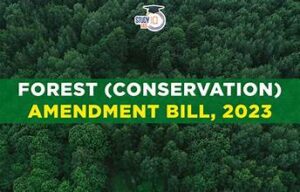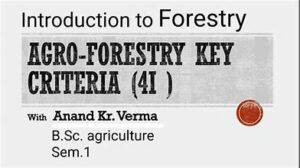Introduction
Forestry plays a crucial role in maintaining ecological balance, supporting biodiversity, and providing economic benefits through timber and non-timber products. However, the sector operates within a complex web of legal frameworks that govern sustainable practices, conservation, and land use. As we move into 2024, understanding these regulations is vital for stakeholders—from policymakers and forest managers to local communities and businesses. This article explores the key regulations shaping forestry in 2024 and the emerging trends that are likely to influence the sector’s future.
The Evolving Legal Landscape
Forestry regulations are continually evolving to address new challenges and incorporate scientific advancements. The legal framework governing forestry includes a mix of national laws, international agreements, and regional policies. These regulations are designed to ensure sustainable management, protect forest ecosystems, and address climate change impacts.
- National Regulations
National forestry regulations vary widely depending on the country. However, common elements include:
- Sustainable Forest Management (SFM) Practices: Many countries have adopted laws requiring sustainable forest management practices. These laws mandate the development of management plans that balance economic, environmental, and social objectives. For example, the U.S. Forest Service enforces the National Forest Management Act (NFMA), which ensures that forest management practices do not adversely affect the environment.
- Timber Harvesting Regulations: Regulations governing timber harvesting often include quotas, licensing requirements, and guidelines to minimize environmental impacts. In Canada, the Forest Management Agreements (FMAs) set out terms for sustainable harvesting and forest renewal.
- Conservation and Protection Laws: Laws that protect specific forest areas, such as national parks and conservation reserves, are crucial. The European Union’s Natura 2000 network is an example of a regional approach to conserving important forest habitats.
- International Agreements
International agreements play a significant role in shaping forestry practices worldwide. Some key agreements include:
- The Convention on Biological Diversity (CBD): The CBD promotes the conservation of biodiversity, including forest ecosystems. It influences national policies by setting targets for protecting and restoring forest habitats.
- The Paris Agreement: This global climate agreement includes commitments to reduce greenhouse gas emissions, which impact forestry practices. Countries are required to integrate climate considerations into their forest management strategies.
- The Forest Stewardship Council (FSC) Certification: The FSC provides a global standard for sustainable forestry. Certification under the FSC ensures that forest products come from responsibly managed forests that meet environmental, social, and economic standards.
Key Trends Influencing Forestry Regulations in 2024
As we look ahead to 2024, several trends are expected to shape the legal frameworks governing forestry. These trends reflect a growing emphasis on sustainability, climate resilience, and technological innovation.
- Increased Focus on Climate Change
Climate change is a significant driver of forestry regulation changes. Forests play a vital role in carbon sequestration, and there is a growing recognition of their role in mitigating climate change. Key trends include:
- Carbon Trading and Offset Programs: Many countries are developing carbon trading schemes and offset programs that involve forestry projects. These programs provide financial incentives for sustainable forest management and reforestation efforts.
- Climate Adaptation Strategies: Regulations are increasingly incorporating climate adaptation strategies to enhance forest resilience. This includes guidelines for managing forests to withstand extreme weather events and changing climatic conditions.
- Advancements in Technology
Technological innovations are transforming forestry practices and regulations. Some notable developments include:
- Remote Sensing and GIS: Remote sensing technologies and Geographic Information Systems (GIS) are being used to monitor forest health, track deforestation, and manage forest resources more effectively. Regulations are evolving to incorporate these technologies into forest management practices.
- Blockchain for Supply Chain Transparency: Blockchain technology is being explored to improve transparency and traceability in the timber supply chain. This can help prevent illegal logging and ensure that forest products are sourced sustainably.
- Enhanced Focus on Indigenous Rights
Recognizing and respecting the rights of indigenous peoples is becoming a central theme in forestry regulations. Key aspects include:
- Free, Prior, and Informed Consent (FPIC): Regulations are increasingly requiring that forest management activities obtain the free, prior, and informed consent of indigenous communities. This principle ensures that indigenous peoples have a say in decisions affecting their traditional lands and resources.
- Indigenous Land Rights: Legal frameworks are being adapted to better recognize and protect indigenous land rights. This includes formalizing land titles and incorporating indigenous knowledge into forest management practices.
- Promotion of Sustainable Forest Products
The demand for sustainable forest products is driving regulatory changes. Trends in this area include:
- Certification Schemes: The expansion of certification schemes, such as FSC and Programme for the Endorsement of Forest Certification (PEFC), is influencing forest management practices. Regulations are increasingly aligned with these certification standards to promote responsible forestry.
- Consumer Awareness: Growing consumer awareness about the environmental impact of forest products is prompting regulations that require companies to disclose sourcing practices and adhere to sustainability standards.
Challenges and Opportunities
Navigating the legal frameworks in forestry presents both challenges and opportunities. Key challenges include:
- Compliance Costs: Adhering to complex regulations can be costly for forest managers and businesses. Finding ways to balance compliance with financial viability is crucial.
- Enforcement and Monitoring: Ensuring effective enforcement of forestry regulations and monitoring compliance can be challenging, particularly in remote or under-resourced areas.
However, these challenges also present opportunities for innovation and collaboration:
- Collaboration with Indigenous Communities: Engaging with indigenous communities can enhance forest management practices and support conservation efforts. Collaborative approaches can also help address legal and regulatory challenges.
- Leveraging Technology: Embracing technological advancements can improve efficiency, transparency, and compliance in forestry operations. Investing in technology can also create new opportunities for forest management and conservation.
Conclusion
As we advance through 2024, understanding the legal frameworks governing forestry is essential for ensuring sustainable practices and addressing emerging challenges. The evolving regulations reflect a growing emphasis on climate resilience, technological innovation, and the recognition of indigenous rights. By staying informed about these trends and adapting to regulatory changes, stakeholders can contribute to the sustainable management of forest resources and support the health and vitality of global forests for future generations.


